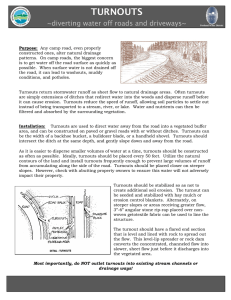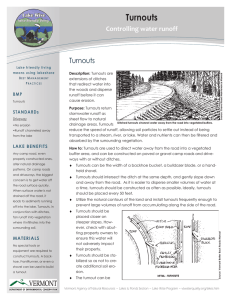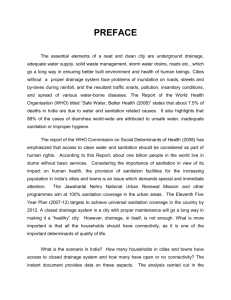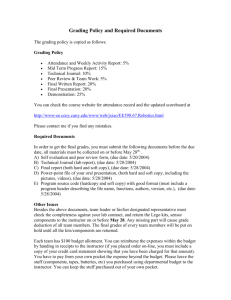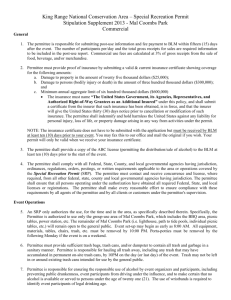FS1287A - Ministry of Forests, Lands and Natural Resource
advertisement
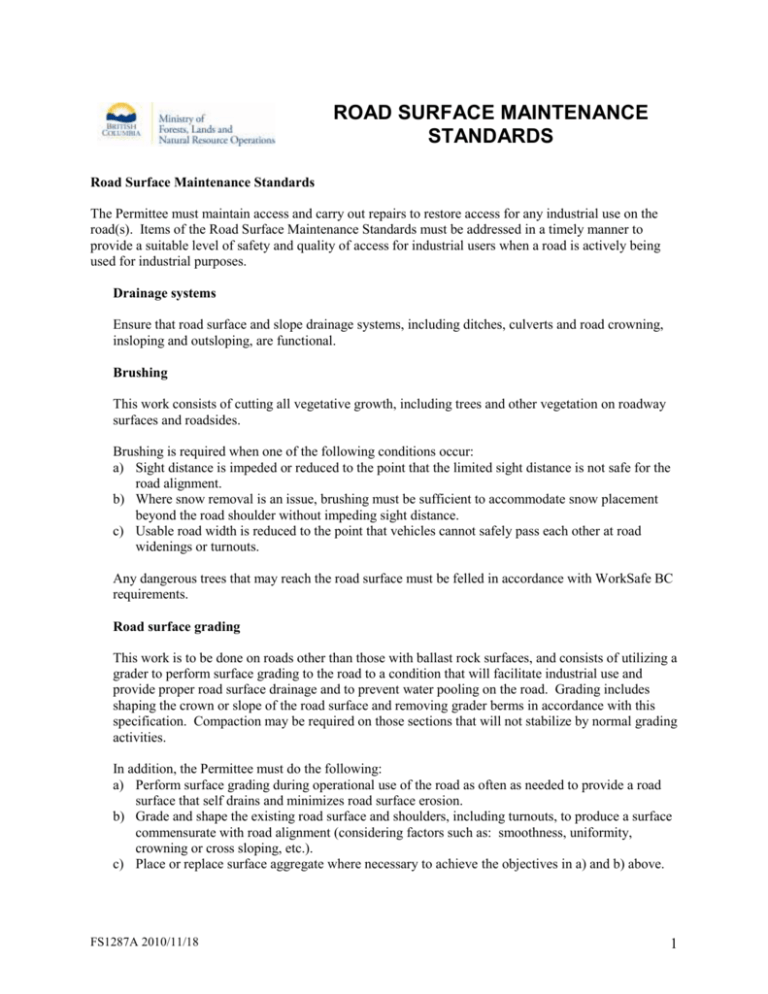
ROAD SURFACE MAINTENANCE STANDARDS Road Surface Maintenance Standards The Permittee must maintain access and carry out repairs to restore access for any industrial use on the road(s). Items of the Road Surface Maintenance Standards must be addressed in a timely manner to provide a suitable level of safety and quality of access for industrial users when a road is actively being used for industrial purposes. Drainage systems Ensure that road surface and slope drainage systems, including ditches, culverts and road crowning, insloping and outsloping, are functional. Brushing This work consists of cutting all vegetative growth, including trees and other vegetation on roadway surfaces and roadsides. Brushing is required when one of the following conditions occur: a) Sight distance is impeded or reduced to the point that the limited sight distance is not safe for the road alignment. b) Where snow removal is an issue, brushing must be sufficient to accommodate snow placement beyond the road shoulder without impeding sight distance. c) Usable road width is reduced to the point that vehicles cannot safely pass each other at road widenings or turnouts. Any dangerous trees that may reach the road surface must be felled in accordance with WorkSafe BC requirements. Road surface grading This work is to be done on roads other than those with ballast rock surfaces, and consists of utilizing a grader to perform surface grading to the road to a condition that will facilitate industrial use and provide proper road surface drainage and to prevent water pooling on the road. Grading includes shaping the crown or slope of the road surface and removing grader berms in accordance with this specification. Compaction may be required on those sections that will not stabilize by normal grading activities. In addition, the Permittee must do the following: a) Perform surface grading during operational use of the road as often as needed to provide a road surface that self drains and minimizes road surface erosion. b) Grade and shape the existing road surface and shoulders, including turnouts, to produce a surface commensurate with road alignment (considering factors such as: smoothness, uniformity, crowning or cross sloping, etc.). c) Place or replace surface aggregate where necessary to achieve the objectives in a) and b) above. FS1287A 2010/11/18 1 d) Unless otherwise specified, thoroughly loosen surfacing material by cutting, scarification or other methods to address the depth of potholes, rutting or washboarding, without causing contamination of the surfacing with the subgrade material or with unsuitable ditch materials. e) Grade only when moisture content is suitable, which may require the addition of water. Turnouts Turnouts must be either intervisible or of a sufficient number given the traffic volumes and the use of radios on the road. They must be sized to accommodate the vehicles that are in regular use on the road. Sign Maintenance This work consists of cleaning, replacing, and reconditioning signs, posts, and markers that currently exist or are the Permittee’s responsibility to install. These include but are not limited to radio frequency call signs, information signs, kilometre markers, traffic control signs and bridge delineators. Winter maintenance This section provides for winter maintenance of roads to facilitate logging operations and safe use. The Permittee must do the following: a) Perform work in a manner to preserve and protect roads, including bridges and other structures. b) As part of ongoing winter log haul operations, remove snow from all or part of the travelled way, including sufficient turnouts, when operations become inefficient, and/or the road would be otherwise unsafe for industrial use. c) Do not undercut cut slopes. d) Do not blade gravel or other surfacing material off the road. e) Restrict snow removal to the usable road surface having roadbed support, including turnouts. Reshape over-width plowing as necessary to define the usable width. f) Wing back or breach snow banks to facilitate drainage at a sufficient number of locations to reduce water flow along road surfaces during periods of melt. g) Keep roadbed drainage ditches, drainage dips, and culverts functional during periods of melt. h) Add sand to the bladed road surface as needed to provide proper traction for industrial vehicles where chains will not be suitable or sufficient. i) With district manager approval, close roads to wheeled vehicles at times when use would be unsafe or when damage to the road could occur. Completion of shared use When the shared use of a forest service road(s) under a Standard Road Maintenance Agreement has concluded, and the responsibility for maintenance is to be transferred to another user or back to the Ministry of Natural Resource Operations, the road must be left in a condition that conforms with these maintenance standards. This may require that the Permittee return to the area after breakup or snowmelt to complete the necessary maintenance work. FS1287A 2010/11/18 2

